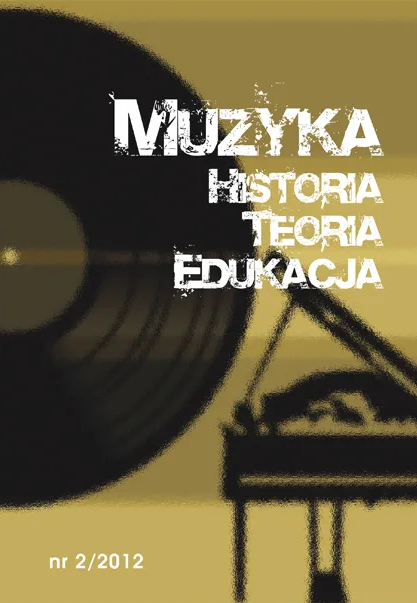Performance technique in the sonoristic pieces of Kazimierz Serocki
DOI:
https://doi.org/10.34767/MHTE.2012.02.03Abstract
The composing interests of Kazimierz Serocki are very broad and diversified. In different periods of his life he referred to the folklore, neo-classicism, dodecaphony or aleatorism. his artistic output is characterized with diversity of the sound language and style. Serocki became interested in sonorism in the 60’s. In the artistic pieces of that time the accent was moved from the melodic-harmonic composition to the tone and his own discoveries in the scope of the timbre, shape and motion. The first sonoristic piece was Continuum for 6 groups of percussion. In this piece, percussion is not only the source of new sounding but the means for constructing the expression in the scope of drama and in the scope of various methods of extracting the sound. The subject of contemplation in this article are the compositions with the emphasized solo cast in the title, for example: two pianos, piano and electronic apparatus, flutes. Putting in the titles the names of the solo instruments in the single cast and the method of their treatment in the pieces is the fact that these are the typical solo performances. The author analyzes in the above pieces the influence of the cast on the sounding of the pieces, sources of the sounds, methods of extracting the sounds. The method of extracting the sound is an important factor in the sonoristic music of Serocki. In all discussed pieces, we encounter many articulation methods. The percussion instruments have expanded their number by other instruments, treated as percussion just thanks to the articulation. Such function was most frequently taken over by the piano among other by means of: sharp use of the accords with loud dynamics, pulling the strings by the nail, quick moving of the fingers on the strings, hitting the strings with the open palm. In all discussed pieces of Kazimierz Serocki not only the introduction of many unconventional tones but mainly the method of their use became the value. Serocki was not focused on the sonoristic effects themselves but created original tone groups by means of associating the timbres and he built the drama of his pieces on these tone groups. The composer drew from the traditional sources of sound, used the preparation of the instruments, application of the resonance box as the source of the sound but also used the electronic and electro-acoustic apparatus. The traditional instruments use not only the commonly used methods of extracting the sound, also more sophisticated and unconventional articulation means are applied.
References
Nowak Anna, Współczesny koncert polski. Przemiany gatunku, AM, Bydgoszcz 1997.
Zieliński Tadeusz Andrzej, O twórczości Kazimierza Serockiego, PWM, Kraków 1985.
Zieliński Tadeusz Andrzej, Postawa estetyczna Kazimierza Serockiego, [w:] Przemianytechniki dźwiękowej, stylu i estetyki w polskiej muzyce lat 70., AM, Kraków 1970.

